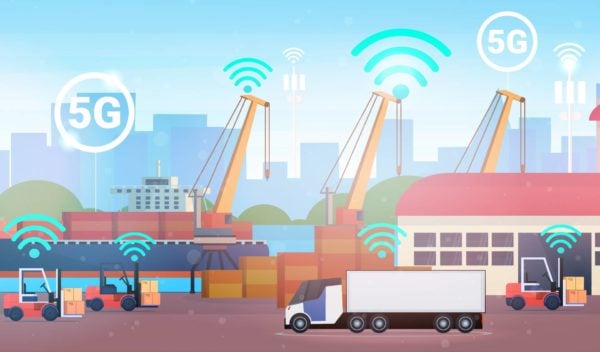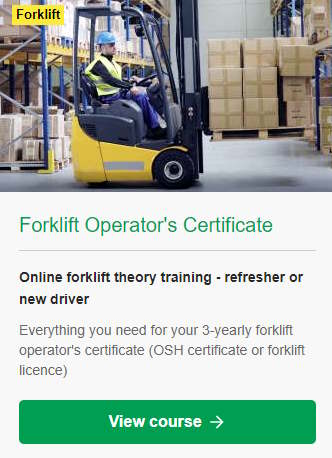Forklifts can become unstable when driven in excess of a safe speed, goods can be damaged and wear and tear is increased, so it’s essential that a forklift speed limit is established. There are many ways in which this can be done.
Speed limiters and technology
Make speed limiters compulsory on all forklifts. Speed limits can be retrofitted to existing forklifts; some new forklifts come with speed limiters as standard.
Speed limiters can be fixed (i.e. limited to one speed regardless of load weight, area, operator, etc) or variable, e.g. altering depending on the load weight, load height, turning radius, operator using the machine, etc. They can be controlled by GPS/RFID zones to give different speed limits in open yards vs tight racking or areas near pedestrian activity. This is called geofencing. Speed limiters can also be used to control throttle response, something that can improve tyre wear.

Install warning alarms that sound when a forklift is speeding, and that report to a centralised system; the forklifts must have speedometers for this to be effective.
There are four main pedestrian warning systems available which have the capability to control a forklift’s speed (if set up in that way):
- Reflective tape detection: this uses a laser to detect the type of reflective material use on high-vis vests, or reflective tape that can be attached to bollards and other objects
- Sonar: this uses high-frequency sound waves to build a picture of the surroundings and warn a driver when approaching an object
- Radar: this detects transceivers worn by pedestrians, carried in machinery or placed in strategic locations
- Magnetic field generators: this detects transceivers worn by pedestrians, carried in machinery or placed in strategic locations
No one system is perfect for every work environment and it’s best to get a demonstration of each system to find out which one works best for you.
Cameras
Putting cameras on forklifts is both a way of finding out how an incident happened and a method of discouraging drivers from driving outside of your guidelines.
Training and information
Your speed limit should be included as part of your training and induction. You can also run a toolbox meeting about forklift speed and braking distances. Reducing the speed will reduce the braking distance and should reduce crashes. However, this does need to be balanced with productivity requirements, and it may be easier to remove pedestrians from some areas rather than drop the forklift speed limit.
Workplace speed limits
Set workplace speed limits to match the environmental conditions (e.g. weather, lighting), pedestrian flow, other vehicles, blind spots or areas of poor visibility, forklift specifications and the types of load being transported.
Slow other traffic down to forklift speeds.
Signage and markings
Use clearly posted signage around the work area. Where a speed limit might change, e.g. entering a warehouse or exiting to a yard, repeat the signs.
Effective management and enforcement
Remove any reason or motivation for drivers to speed by ensuring that their work schedules are not unrealistic and that their routes are optimised
Enforce speed limits; don’t let drivers get away with speeding.
Warehouse design
Without causing dangerous pinch points or areas of low visibility, can natural barriers and chicanes be used to slow drivers down?
Ensure that floors are clean and dry (where possible) so that forklifts have the maximum available grip.


